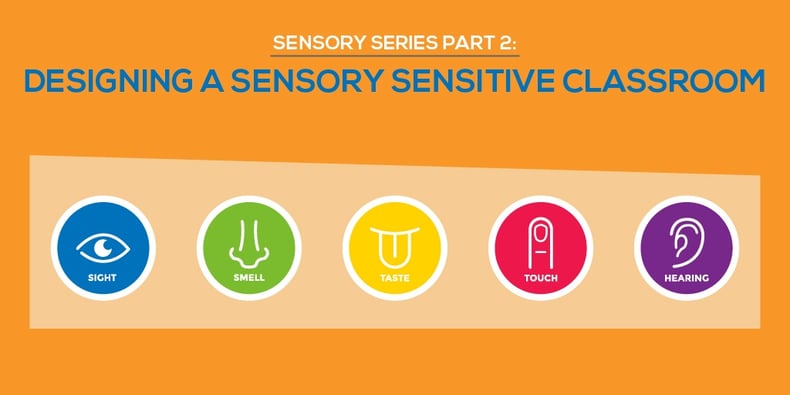
In Part 1 of the Sensory Series, we discussed meeting the various sensory needs of students. The classroom environment plays a major role—and when it comes to setting up a classroom, there are already so many things to consider. Teachers have to find a spot for everyone to sit, think about the flow of the room, the space for technology, the location of the MimioBoard touch board, and where to put the Kleenex. Whew! And this doesn’t even really scratch the surface.
After all that is sorted, another very important consideration should be evaluated: How will students with sensory processing issues handle my room? Will their needs be met? Are there things I could do to prevent situations from coming up later on? How do I be as sensitive as possible to meeting their needs?
Sensory Awareness
If you aren't sure what types of sensory needs some of our students have, be sure to read our brief overview of sensory processing disorder and autism in Part 1 of the Sensory Series. This overview can help you see the “big picture” goals of a sensory sensitive environment, as well as some of the background information behind the various conditions.
So, as to leave no stone unturned, let’s take a look at the different sensory needs that students may have—and how we can proactively set up a classroom that best allows all students the chance to succeed:
- Touch: When it comes to touch, students can have a variety of needs. Some students will have the need to touch certain textures, while other students will have the need to not touch certain textures. For some students, teachers need to put things they can touch in place that will meet their tactile needs. This could include a piece of velcro under the desk, specific fidget tools, or even therapy putty. These items help students with sensory needs and those who struggle to focus in the classroom.
Teachers should also consider how objects may feel to the students who dislike the sensory input of items touching them. Think through things like PE uniforms, art painting shirts, or pinnies that are worn over shirts during a game. If a student is sensitive to different clothes and textures on their skin, some of these may spark a reaction. These are just a few quick examples of things to consider.
- Smell: Unfortunately, many classroom smells can't be controlled by the teacher. Step one is recognizing this and helping any students with issues as they may arise. Students who are sensitive to smells and have reactions from them are pretty rare, but it does happen.
Some items for teachers to consider when it comes to sensitivities with smells include cleaning supplies used for tables, windows open for allergies and other airborne smells, and even the types of markers that they use. If students still struggle with this, using an air filter in the room can help to keep the air clean.
- Taste/Oral Motor: Students with sensory needs in the area of taste don’t often impact the classroom. These students will bring their own lunches to school and often have a limited or controlled diet. Even so, considering how tastes matter to students during holiday parties, birthday celebrations, and other times of the year is important. There are also some students who have oral motor needs independent of taste needs—these students will use chew necklaces or other devices to help meet their oral motor needs.
On a side note, students with severe allergies have much different needs than students with sensory issues, but some of the notes in the “taste” section still apply. The best practices of labeled foods, precaution about exposure to unknown tastes and foods, and a clean, disinfected environment are all applicable to an allergy-free classroom—just as they are for students with taste sensory needs.
- Sound: This can be a big one for students, and is probably the most common sensory need in the classroom. Students can have a sensitivity to volume, pitch, tone, or even different voice types. I once had a student who would respond much differently to any male voice than he did to any female voice.
There are several things to consider when thinking about the sounds around the classroom. The HVAC will be coming on and off, and in older schools this can make a lot of noise. Fire alarms and school bells can be very overstimulating for students with sensory issues. Keeping a close eye on what causes students to react can help teachers to learn which structures to put in place. Here is a great resource from Understood.org for other ideas to assist in this area.
- Sight: Most students who have sensory issues when it comes to vision experience trouble with technology. The brightness and flashing of a screen can be a trigger for students who have sensory issues. Other considerations would be the size of text and the ability for a student to control how they read (lighting, size, color, etc.).
This may seem like an overwhelming series of considerations, but teachers can rely on their teams for support. Parents will have a good idea of what to do to help their students. Special education providers—such as occupational therapists and physical therapists—will be able to help with support systems, interventions, and adaptive technology. By working together, the team can create a plan for success for every student.
Don’t miss Part 3 of the Sensory Series, which will detail great tech tools for sensory sensitivity. Subscribe to the Mimio Educator blog today to be informed when the final post of this series is available!





